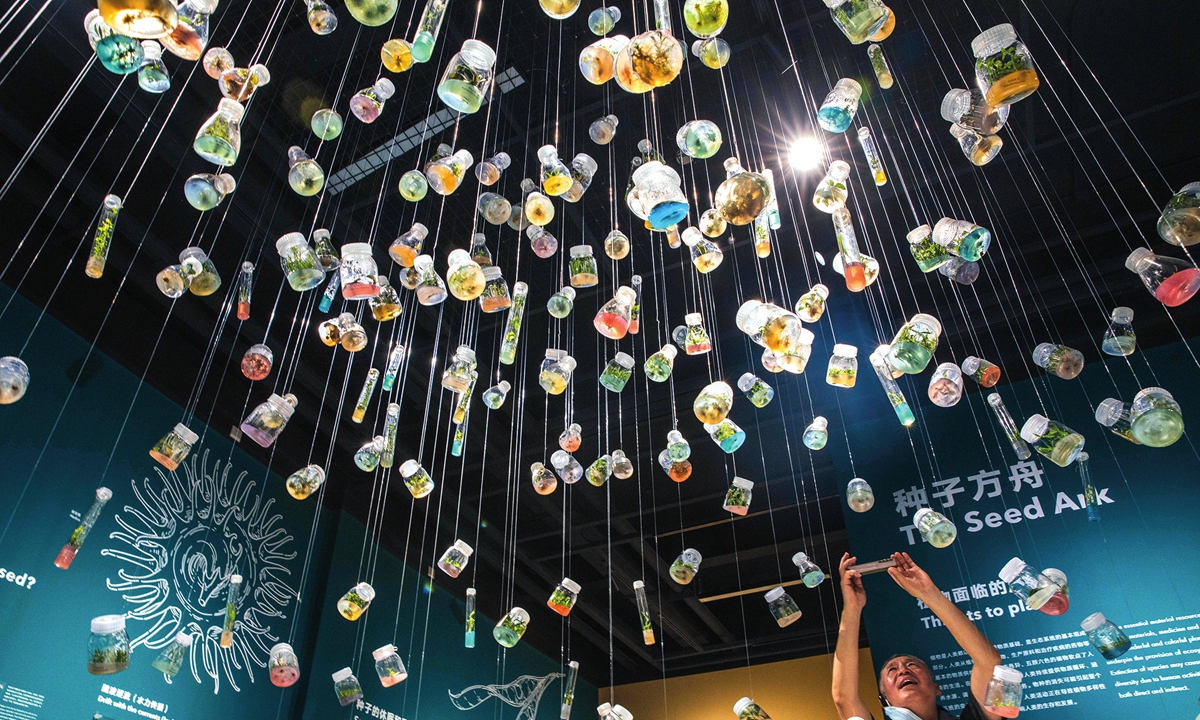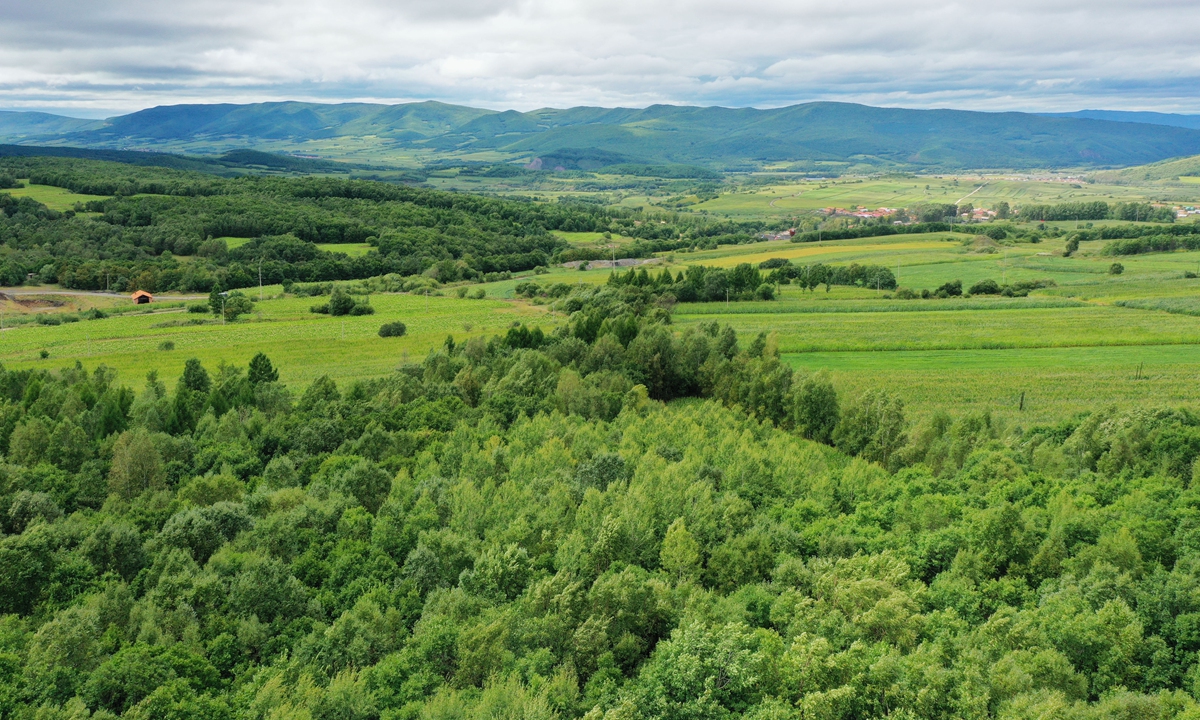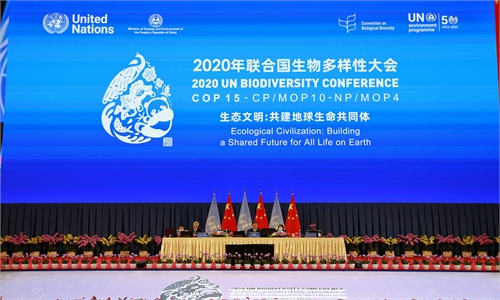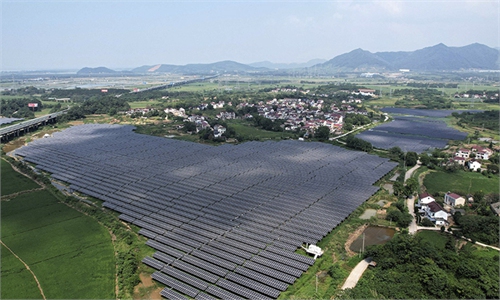IN-DEPTH / IN-DEPTH
Mutually-beneficial science plan under BRI helps global biodiversity cause
Nature's saving grace

Seeds displayed at the COP15 meeting Photo: Li Hao/GT
China announced it would establish a Kunming Biodiversity Fund and take the lead by investing 1.5 billion yuan ($233 million) to support biodiversity protection in developing countries during the just concluded first part of the COP15 summit, which injected much hope and confidence into the global biodiversity cause.As a matter of fact, China's technology cooperation with developing countries on biodiversity has started through multilateral mechanisms such as the Belt and Road Initiative (BRI) long before the meeting.
During last week's COP15 meeting in Kunming, Southwest China's Yunnan Province, foreign representatives hailed BRI's significance in helping developing countries achieve sustainable ecological development while improving local infrastructure and livelihood, and the technology developed and shared by China has enabled China to become "a good leader, not just domestically but also internationally," some representatives said.
Cao Jinghua, Executive Director of the Secretariat of the Alliance of International Science Organizations (ANSO), a science organization for the quality development of the BRI regions initiated by the Chinese Academy of Sciences (CAS), told the Global Times last week on the sidelines of the COP15 that the ANSO aimed at bringing "green and sustainable development" to the BRI, stressing the significance of capacity-building and technology in the BRI, which are still lacking.
As the first comprehensive international organization jointly established by national academies of sciences, universities, research institutes, and international organizations in 2018, the ANSO aims to provide science-based solutions to common challenges in the BRI countries including climate change, eco-environment and resource problems, natural disasters, emerging and infectious diseases, food security issues and biodiversity protection, and has supported various kinds of science and technological cooperation and talent-trainings.
According to Cao, who was the former director general of the Bureau of International Cooperation of the?CAS, the CAS has helped some BRI countries to protect biodiversity and ecosystems and build up their own biodiversity catalogs and systems. Through cooperation, they have not only expanded the global knowledge base, but improved and enhanced local capacity-building in research by passing on knowledge and training.
"It is not something you can simply take away, and the cooperation must be mutually beneficial. We put lots of emphasis on helping and improving the capability of these countries and local people we cooperate with," Cao said.
As about 60 to 70 percent of all BRI countries are in semiarid regions, China has conducted international cooperation programs to understand the impact of these regions under climate change and human activities, Cao said.
By partnering with the UN Commission on Science and Technology for Development, ANSO has organized several online workshops for experts from developing countries in Southeast Asia and Africa on efficiently monitoring crops and ecosystems with satellite data. These experts from developing countries will then learn to make agricultural decisions by themselves to achieve better management of floods, drought control and monitoring pest effects on crops, and better protect biodiversity, Cao said.
Some of their cooperation efforts may indirectly contribute to biodiversity protection. Cao gave an example of a construction material in which ANSO has supported Chinese scientists to cooperate with their counterparts from the Philippine. They used Chinese nano paint to mix with local sand to produce a construction material which could be used to paint houses to save energy. It contributed to the mitigation of climate change impact, Cao said.
But Cao also admitted that China's biodiversity research is far from ideal in the world, and he noted that China has to enhance its interdisciplinary research on the interaction of plants, animals, and other organisms, including viruses. While hailed by many developing countries, the BRI cooperation is often politicalized by some in Western media and governments in a biased way.
In response, Cao said that some Western countries cannot accept the rapid development of China and have turned a blind eye to the positive things that China has done.

A view of the Northeast China Tiger and Leopard National Park. Photo: IC
The first part of the 15th meeting of the Conference of the Parties to the Convention on Biological Diversity, or COP15, was held from October 11 to 15 in Kunming, in Southwest China's Yunnan Province where participants reviewed the post-2020 global biodiversity framework to draw up a blueprint for biodiversity conservations in the future. The second part, to be held in person in the first half of 2022, will see broader and more deepened negotiations toward an ambitious and practical framework.According to an ANSO's report released during the COP15 meeting, 59 scientific institutions, universities, and organizations in 44 countries have since become ANSO members as of the end of 2020, providing an important technology cooperation platform for the BRI's innovation.




